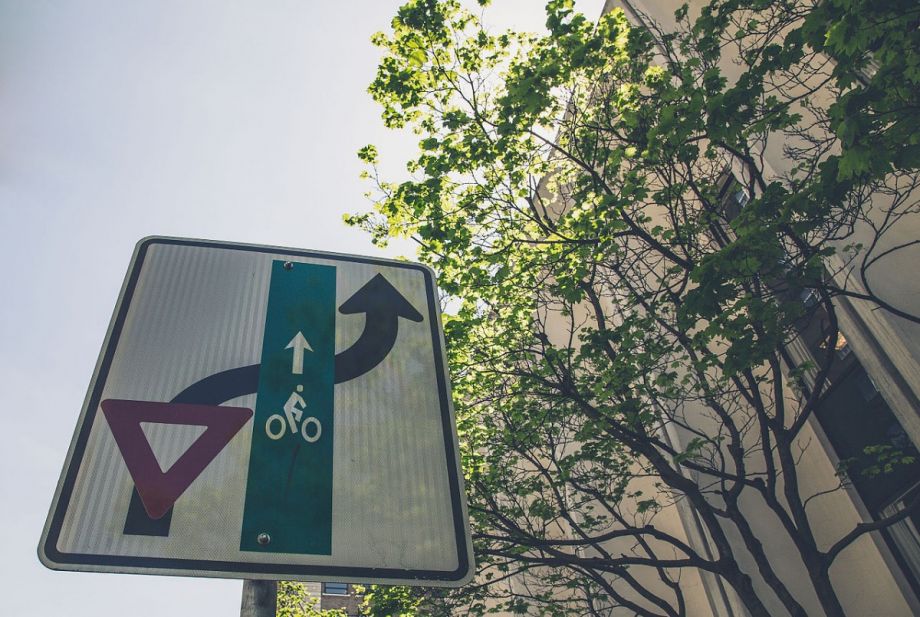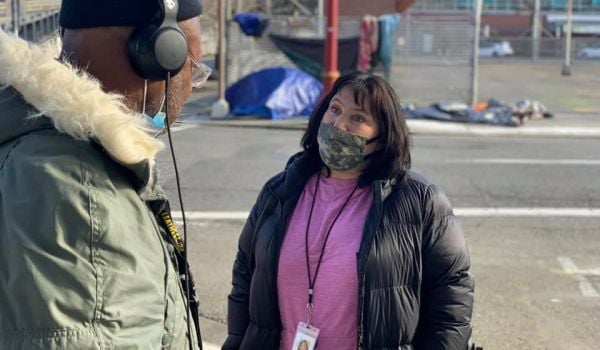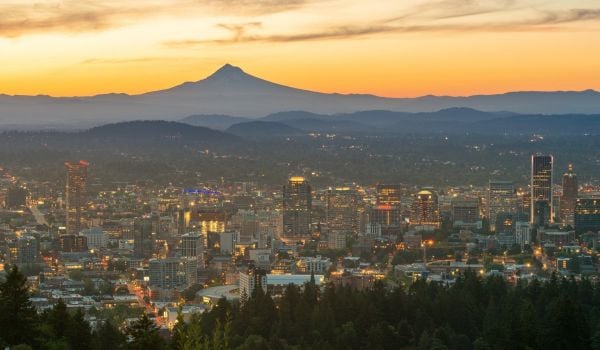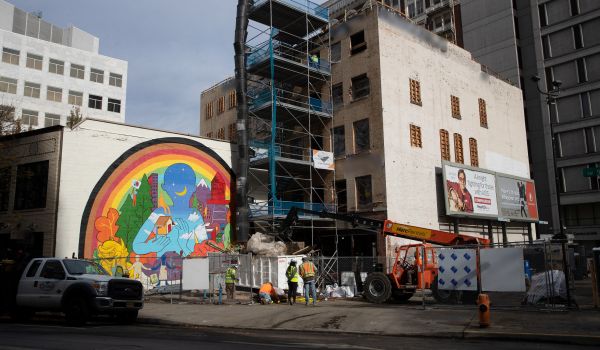Last week, the Portland Bureau of Transportation opened the $4.5 million, 9.1-mile “20s Bikeway.” The project combines neighborhood greenways, bike lanes and arterial crossings to create a rare north-south route through the entire city. PBOT Director Leah Treat says it is the largest bike project her agency has delivered all at once.
“It’s a fantastic project that’s absolutely going to improve north-south mobility for people riding bikes in Portland,” says Gerik Kransky, policy director at The Street Trust, a nonprofit membership organization that promotes walking, biking and public transit. “Folks were already riding north and south on a few of the streets that have been upgraded through this project. Nine miles of connectivity changes the game for people.”
Though the Oregon city is known for its robust bike network, most of that infrastructure is east to west. The Willamette River runs north to south, dividing the city in half. Downtown is west of the river. Many of the residential neighborhoods are to the east and major arterial roads were built east to west to connect them to downtown.
Kransky explains that not only did the city lack a good north-south bike route, bicyclists traveling that direction also had to cross many busy east-west arterials.
“There were a whole bunch of intersections that were not suitable or safe,” he says. “The dedicated bicycle crossing signals and pedestrian-actuated crossing lights are really hallmarks of the success of the project. People may not ride all 9 miles, but they’ll use the route to cross the busy streets near their house.”
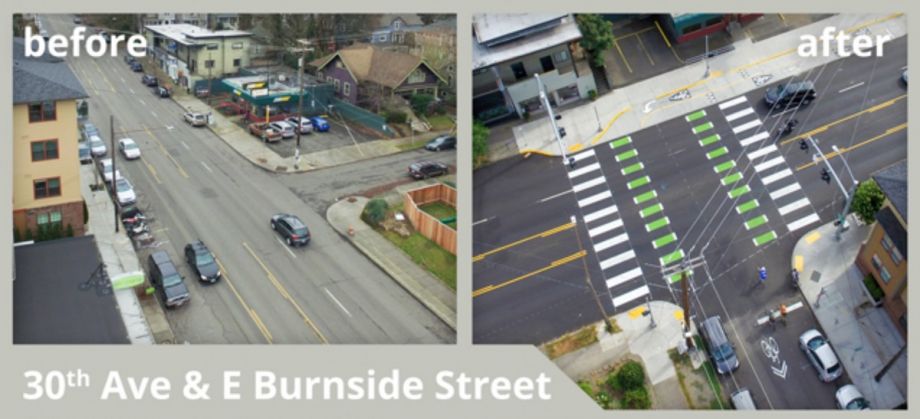
Before and after 20s Bikeway project (Credit: Portland Bureau of Transportation)
Neighborhood greenways make up the bulk of the route. Riders follow signs and sharrows through quiet neighborhood streets. In a few spots, the route includes green-painted bike lanes and a spot with a protected bike lane.
For advocates, the biggest shortcoming of the project is its use of sharrows and speed bumps on a busy, commercial stretch of 28th Avenue. The original design had plans for a buffered bike lane, which would’ve required removing on-street parking. But PBOT scrapped those plans after 60 businesses came out in sharp opposition to the parking loss. For those not keen on riding on 28th, the route offers people the choice to jog a few blocks over to another neighborhood greenway.
“You’ll get people riding through there, but it will continue to be an auto-oriented street,” says Kransky.
Treat concedes that sharrows on a busy street are not ideal and that only the most confident bicyclists will likely ride this stretch of 28th Avenue. But, she says, “This was a really significant project to deliver. Compromises were made. We didn’t want to lose the project over [28th Avenue] and not be able to complete the whole 9.1-mile stretch.”
A few miles to the south, 28th Avenue was the site of another fight, this one between PBOT and the Oregon Department of Transportation, at Powell Boulevard, which is also a state highway. When PBOT proposed adding a signalized crossing for bikes and pedestrians at the intersection of 28th and Powell, ODOT reps said they would have to remove the bike lane on 26th Avenue along with the signalized intersection. Treat explains that by ODOT’s standards, there isn’t enough traffic on 26th and 28th to warrant signals on both and the resulting impediment to traffic flow on Powell.
Treat says it’s indicative of the fundamental disagreement her agency has with the state DOT about the prioritization of cars over other modes. “We disagreed because the way we count throughput includes people on bike, foot and cars. ODOT just counts cars,” she says.
ODOT ultimately allowed the 28th Avenue signal without the removal of the 26th Avenue bike lane. But it’s on a trial basis only. The two signals will remain in place until the end of 2017, at which point ODOT will make its final decision on whether the 26th Avenue bike lane gets to stay.
As Portland continues to expand its bike network, it will almost certainly require prioritizing bike mobility over car speed in spots. Kransky has his fingers crossed that ODOT ultimately sides with PBOT on the trial. “There will likely be a resurgence of this conversation in years to come in other similar projects,” he says.

Josh Cohen is Crosscut’s city reporter covering Seattle government, politics and the issues that shape life in the city.
Follow Josh .(JavaScript must be enabled to view this email address)

